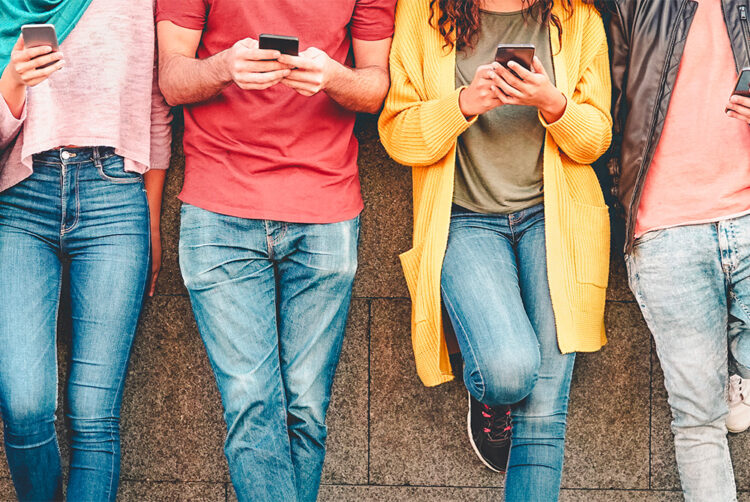We are no longer a captive audience in our living room

Opinion
The most effective modern brand campaigns are powered by two things: clever use of technology and a powerful expression of personality.
Technology changes our habits, and our habits change technology.
This dynamic has powered the explosion of media over the last century. The invention of the TV shaped the lives, habits, and conversations of people for over half a century. Now, smartphones and digital devices are transforming society even further.
In the UK, 88% of all adults own a smartphone. Virtually everyone is connected to the internet. The media landscape has fragmented — people can connect, create, and consume in so many ways. And advertising is evolving in line with these behaviours.
A survey in late 2022 from Isba and Ebiquity found that more than two-thirds of the UK’s biggest advertisers intend to cut back spending on traditional TV next year, with a challenging economic outlook accelerating the shift to digital media. The latest AA/WARC adspend report echoed these predictions. Though ad-spend was largely flat in Q1, Broadcaster video-on-demand (BVOD) spend was up 18.7% — while the total TV market was down.
Consumer habits are changing with technology — and advertisers are following the eyeballs quickly in the face of economic pressure. Now, as social production becomes more agile, distinct, and sophisticated (and takes bigger percentages of marketing budgets), marketers are finding that it makes less and less sense to pump all of their budget into one 30-second film.
Changing the channel
Some brands are now abandoning traditional broadcast advertising in favour of fully digital approaches — are we seeing a tipping point moment, where TV campaigns are starting to support social, rather than the other way round?
This is a far cry from when I began my career in production. The head of TV at a former agency once referred to the social part of a campaign as “the IT stuff” in a meeting. The whole operation was typically funded by whatever scraps were leftover from the main budget.
Now, almost everything we do at We Are Social is focused on socially-led production, and the agency has grown to the size of some of its more traditional competitors. Things have come a long way since the days of producing a TV ad, then chopping it up into various assets across every other channel — or just sending someone out to do a behind the scenes film for YouTube.
How people consume media changes with the nuances of each channel. Successful modern campaigns will have an overarching brand positioning, and then bespoke expressions of that idea which reflect user behaviours on each individual platform — all with their own distinct approaches to production and storytelling.
Where broadcast traditionally took aesthetic influence from cinema, photography, and television programming, social takes its cues more directly from culture itself rather than the art and entertainment that expresses it. You could even argue that as social becomes the dominant form of advertising, it’s started to influence the aesthetic choices of TV advertising too, becoming faster-paced to compete for attention with smartphones and second screens. Graphic overlays, unscripted formats, the use of influencers, and attention-grabbing narrative arcs are all now omnipresent. It would be interesting to see an analysis of the pacing of editing and the shot choices of TV ads in the TikTok era, compared to previous decades.
These creative choices all require a fast and flexible approach that’s more attuned to the purpose of the work, which is why we integrate our social content production within the agency. Unlike in the relatively stable and process-driven period of TV advertising that came before, we as producers have to be agile and responsive to the same changes in the market that socially-led creative agencies are adapting to at breakneck speed.
Opening the conversation
This isn’t a story of singular change or disappearing budgets. The shift in spend reflects an ever more fragmented media landscape and the desire from advertisers to be more targeted, along with the technological advancements that make that possible.
And this change is probably going to accelerate further in the era of AI. As we continue to see a gradual move away from legacy production models that began with the introduction of cheaper, more accessible tools in every sector, it follows that the trend will be exacerbated exponentially now that the barrier to entry is moving towards something as simple as word prompts. We’ll always need to champion the most creative minds to imagine and craft the work, but they won’t need the same infrastructure around them that they currently do, and they might fit a wider range of profile types and roles than our current understanding allows.
As technology changes, so do our habits and preferences. We are no longer a captive audience in our living room. We can share, create, and connect wherever we are.
Which is why the most effective modern brand campaigns are powered by two things: clever use of technology and a powerful expression of personality. Advertising is no longer a competition of who spends the most or shouts the loudest. It’s a conversation, where brands position themselves as people. And while it’s possible that TV advertising could experience a resurgence as audience habits and streamer revenue models continue to change, it’s never going back to being the sole response to a brief.
Dan Keefe is head of studios at We Are Social




